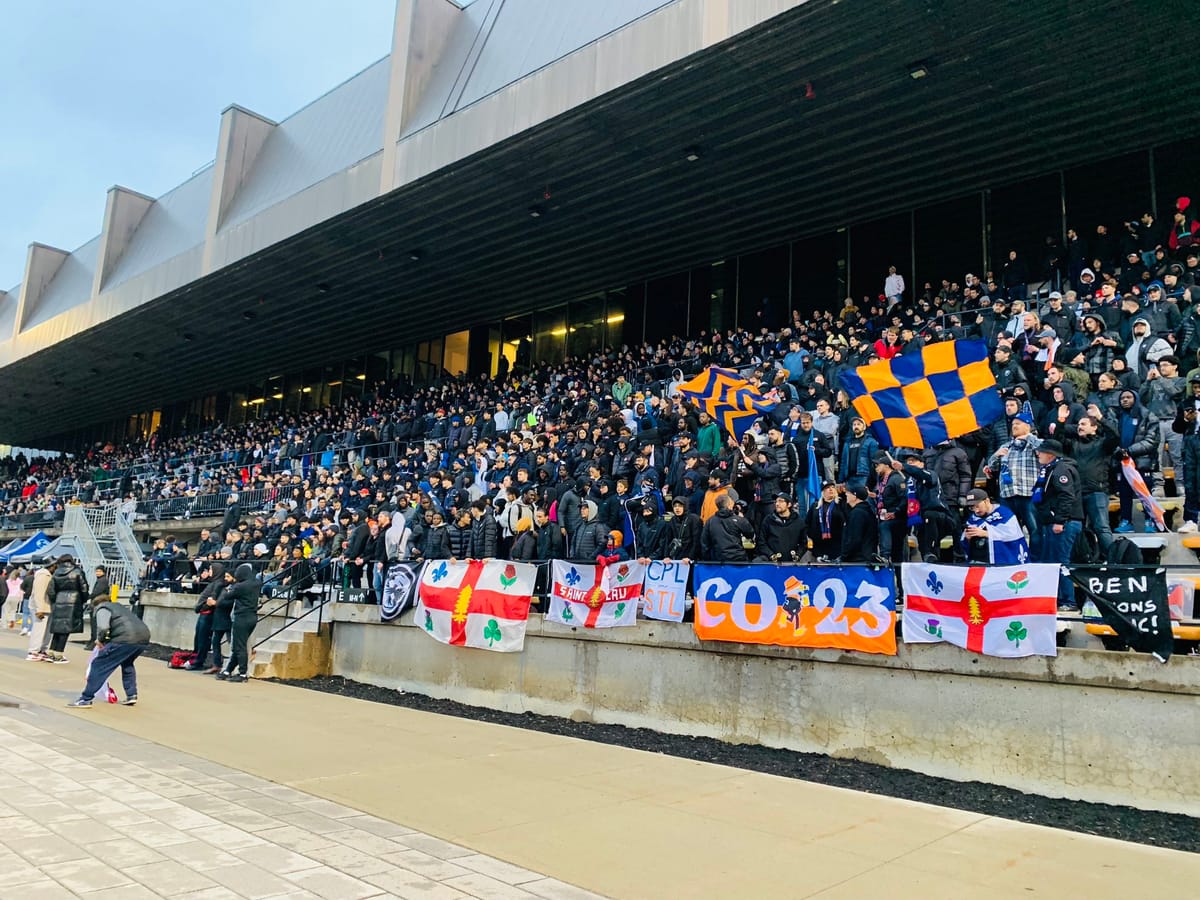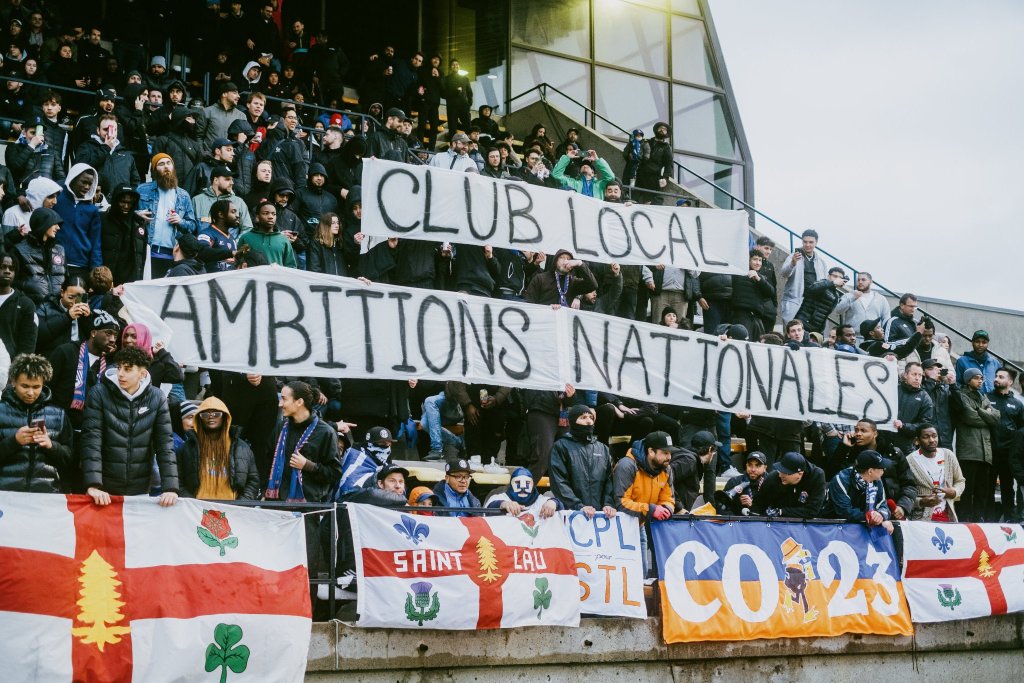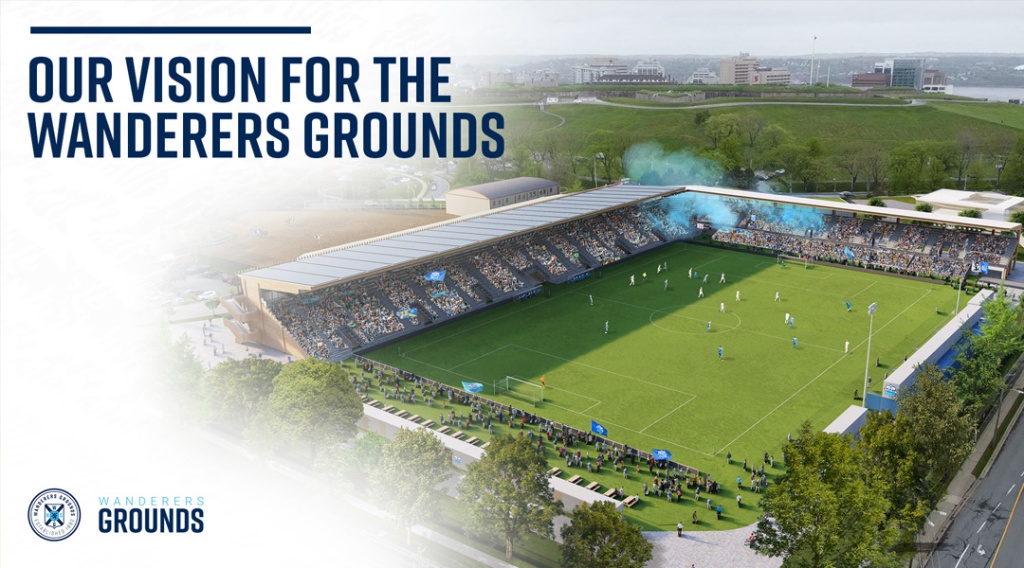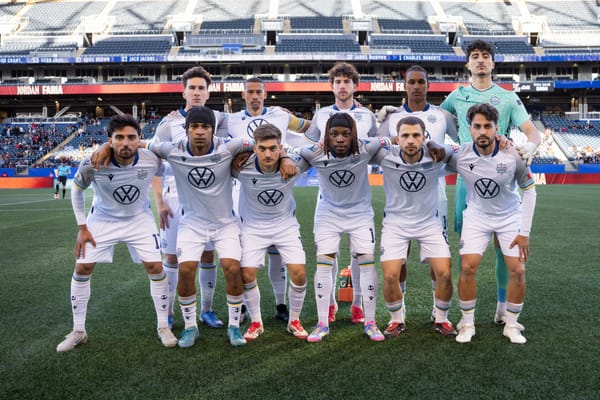For CS Saint-Laurent — and other potential groups in Canada — venues and stability remain the biggest obstacles to CPL expansion, says sports economist

Speaking to media last week following the conclusion of their Canadian Championship tie against MLS side Toronto FC, CS Saint-Laurent head coach Nick Razzaghi's voice was full of pride.
Pride that the Ligue1 Québec champions had been the province's first semi-pro club to knock out a professional outfit in the form of the Halifax Wanderers. Pride that CS Saint-Laurent were the first semi-pro club to score a goal against MLS opposition. Pride that his players had shown Canada what Québec has to offer in terms of talent and for what they one day hope to achieve by joining the professional ranks, potentially as the CPL's first club in French Canada.
With belief, said Razzaghi, his players had capitalized on domestic cup magic.
"I hope this game gives them all that belief," he explained. "Listen, there's work to be done but it's truly possible. People are talking about, hopefully, CS Saint-Laurent taking this further one day. We're talking about looking at the next level. Hopefully, this gives (the players) the belief that it can be done and it will be done because what they did — and it's weird to say after losing 8-1 — but it was incredible."
CS Saint-Laurent was beaten 11-1 on aggregate by Toronto FC, who sit near the top of the MLS standings, but the experience has only further lit a fire under their aspirations; Razzaghi was extremely clear in his squad's goals for next year.
"Our goal is to be back and be back stronger, that's not a question," he said.
And although CS Saint-Laurent has made no formal decision as to where they'll play next year, the same obstacles stand before them as there are for any perspective CPL clubs in Canada: the dual need for a dedicated, properly-sized venue and deep-pocketed owners. CS Saint-Laurent is talking to potential investors, some of whom have taken interest since their Canadian Championship heroics. But venues — and working with investors and municipalities to secure them — remain the biggest hurdle to any hopeful CPL expansion.
Perception remains a very Canadian problem
Moshe Lander, a senior lecturer of economics at Concordia University in Montréal with a keen interest in sports, explained that football in Canada comes with its own set of challenges, specifically as it relates to facilities and who pays for them.
Typically, he said, leagues like the CPL have to battle public opinion when it comes to government spending as much as they do with municipal bodies.
"If we're going to put government funding into a public arena versus a public stadium, there's usually a little more public acceptance in the idea that it go to a public arena. People in Canada still view soccer as being a sport you put your children in but not something you view as a permanent career," Lander told The Wanderers Notebook. "We don't see our children as being future Lionel Messis but we all see our children as being future Sidney Crosbys and Nathan Mackinnons."
There's no denying, however, that the needle is moving when it comes to football in Canada, with Toronto and Vancouver slated to be host cities for the 2026 FIFA World Cup. Recent announcements around the Northern Super League — Canada's professional women's league launching in 2025 — also point towards positive growth of the sport.
CPL clubs are in a very different position; although only in its sixth season, the league has struggled to garner national attention amid obstacles ranging from a global pandemic to strife with its broadcaster, Mediapro. It's growing pains like these, said Lander, that will make the league want to ensure all the conditions are met in potential expansion cities before making the leap.
Facilities, of course, are one of the biggest question marks.
"If you don't have stable franchises, you don't want to add to that. If you have an unhappy home life, you don't want to bring a child into that unhappy home life. It's the same sort of idea here," said Lander. "I don't know if the CPL is that comfortable so that 'Hey, if things go bad in Winnipeg, we've got another place to move them.'"
So how does it all relate to facilities?
When asked if we'll see football clubs get increased public funding for venues in Canada, Lander said it's possible but important for ownership groups to understand their asks.
Pointing to other sports and their funding, for example, is not a wise tactic.
"When you're making an argument to the government saying 'Well, the NHL gets or even the CFL gets,' it's not the same thing," explained Lander. "Those leagues have been around for a hundred years. You're not making a comparable argument."
What a league like the CPL should be arguing, he said, is about putting down the basic investment and infrastructure to get through the first 25 years of the league.
"This is not a pitch that's going to become the Montreal Forum of soccer pitches. We're not expecting that it's going to be around for 75 years. We just want to get to the 25th anniversary and then we can start to imagine something a little more permanent, something a little more structured. Each step along the way, we can raise that level," said Lander.
Tapping into existing infrastructures can be key.

Lander agreed that the Complexe Sportif Claude-Robillard — the facility CS Saint-Laurent used in Montréal for their match against Toronto FC — was the right kind of facility for a potential expansion club but said ownership groups need to be able to ensure they can consistently fill a facility of that size and have the talent to be competitive.
And while CS Saint-Laurent certainly made a compelling case around their talent, it remains to be seen if the 6,500 fans who came out for their Canadian Championship match would turn up consistently if they joined the CPL. Typically, the club plays at Vanier College and attracts between 600 and 700 spectators for a Ligue1 Québec match, just a few hundred people below current CPL side York United's regular attendance numbers.
There are questions around the Complexe Sportif Claude-Robillard, too. The facility is run by the City of Montréal and, in addition to the football pitch, includes tennis courts, a gymnasium, and Olympic-sized pool. Major renovations are currently underway and will run until 2027 but could the stadium portion be ready to host matches on a regular basis? Previously, the facility served as the home of the Montréal Impact from 1993 to 2007 so history suggests it could be something the municipality is open to discussing. (The City of Montréal was contacted for this story but did not reply in time for publication.)
But if CS Saint-Laurent can make make an argument concerning their talent and fanbase, things like a venue could fall into place as they're tapping into a pre-existing culture and community, something that gives them a definitive leg up in expansion talks.
Within the CPL, Lander pointed to the Halifax Wanderers as a good example of community building.
"What you really need to do is build yourself into the social fabric of the community. I think the Wanderers have done an amazing job," he said.
Lead time important for any future expansion clubs
Halifax Wanderers founder and president Derek Martin is the head of the CPL's expansion committee. In addition to his own club's stadium situation, he has found that venues remain the most important piece of the puzzle when talking expansion.
And until prospective ownership groups have that question answered, the league isn't going to rush new clubs for the sake of saying they've expanded.
"There's no doubt we're going to expand, it's just the pace of expansion has to be right," he said. "I think facilities is one of the most important pieces into what makes a club work. What makes it work (in Halifax) is location. While we don't have the right facility, what we do have is the right location."

Martin noted the Wanderers have proven their concept works at the Wanderers Grounds and is in talks with the Halifax Regional Municipality about a permanent stadium to the tune of about $40-million. And although his club has been successful in building a community, he said other groups have taken notice of the lack of clarity when it comes to the Wanderers' situation.
Still, he doesn't want potential ownership groups to be discouraged.
"In some markets, we have municipalities that are interested in a stadium but we might not have an owner. In others, we have an owner but don't have a stadium solution. Trying to marry those two things up to get the perfect mixture is what takes time," explained Martin.
"At the end of the day, what we've really come to appreciate is you need time to do things right. If you aren't ready to go and announce the team and the venue and have all of your ducks in a row 18 months in advance of when you want to start, then you're not going to give yourself the best conditions to be successful."
CPL commissioner Mark Noonan has said publicly that he expects to double the size of the league in the next 10 years. During his pre-season media tour, he also said there's roughly 15 or so groups in conversations with the league, with two to three groups having signed NDAs in the Province of Québec.
But until groups have their venues sorted, the CPL is ready to wait.
"We're only going to expand when we have the conditions to be successful and those conditions are challenging in Canada, to be blunt," Noonan told The Wanderers Notebook in April.
"It's the biggest challenge we have for the game in Canada, getting facilities built. We can expand tomorrow if we want to go into the wrong facility with CFL lines stitched into artificial turf. We could have expanded by four clubs already and we've had people who wanted to do that and we've said no."
As a rule of thumb, said Lander, treading carefully is often the right move. Other leagues, like the National Lacrosse League, are still paying for their early expansion missteps.
"The CPL, if they're watching what is the better model to follow, you follow the bigger four leagues that show stability before you expand," he said.
Cover Photo Credit: CS Saint-Laurent



